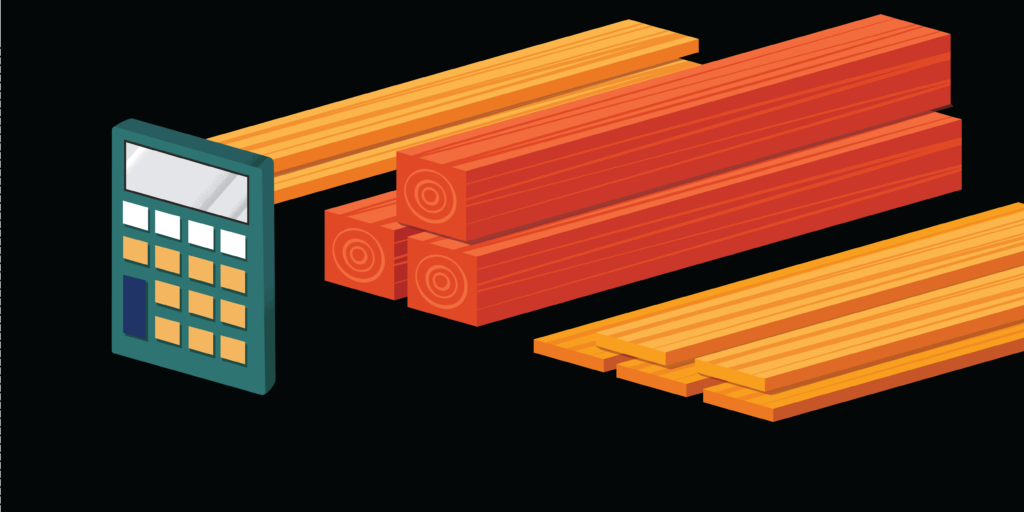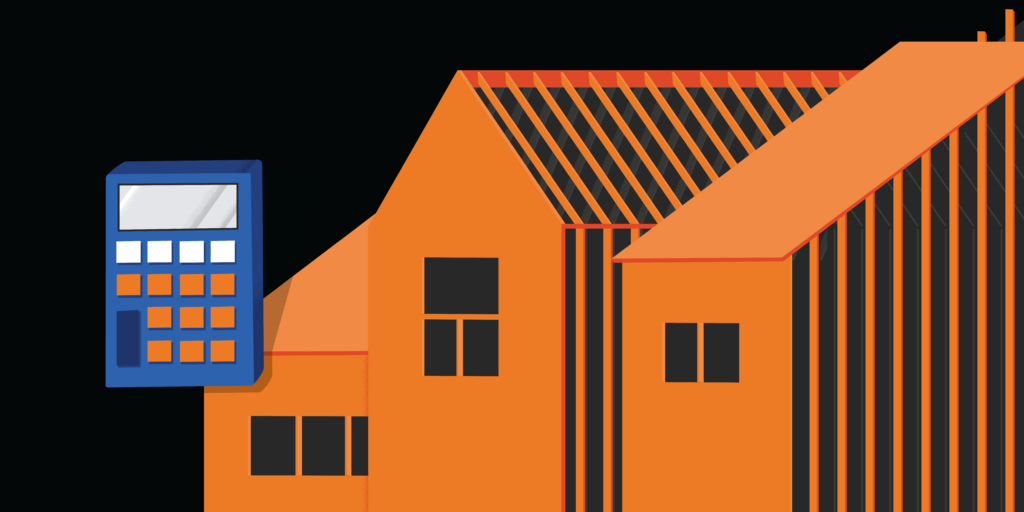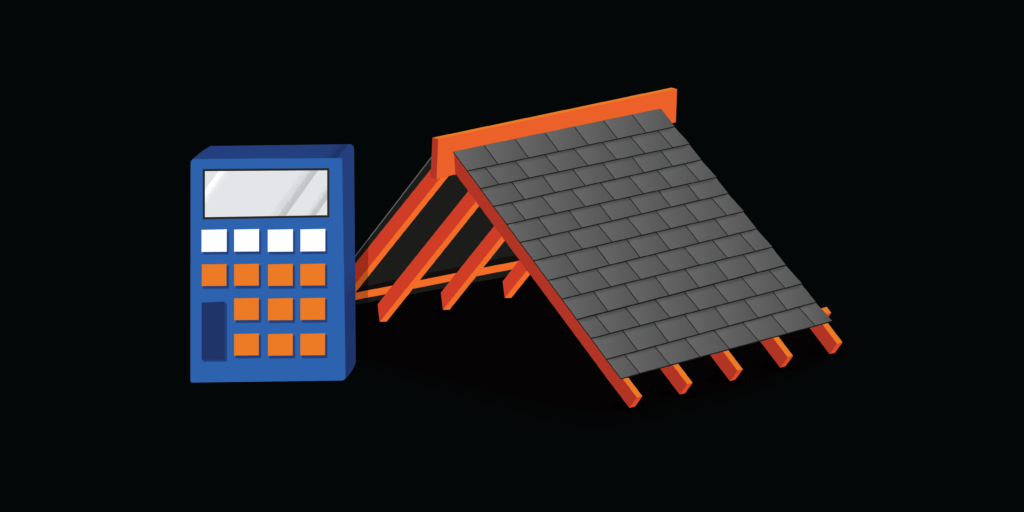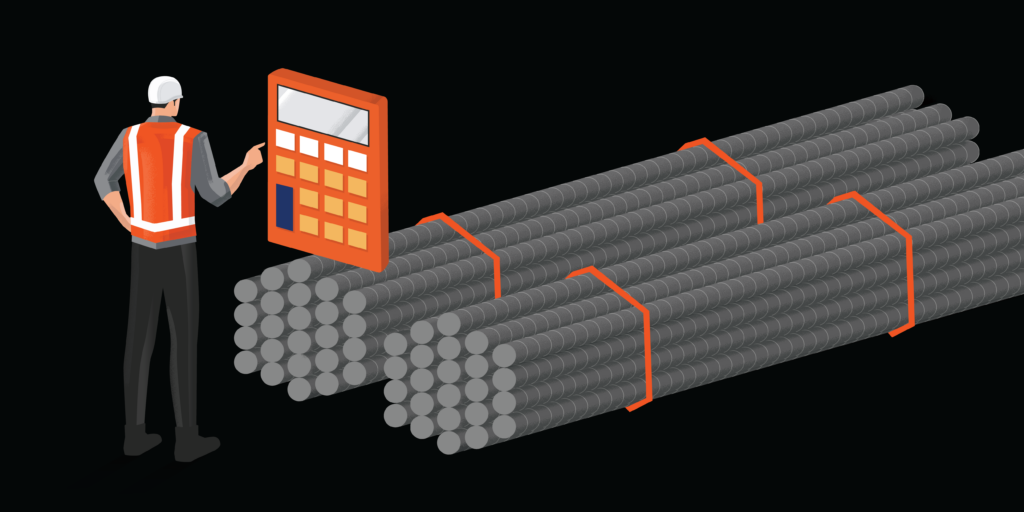— 3 min read
Plywood Calculator
Last Updated Jul 17, 2024
Last Updated Jul 17, 2024
This plywood calculator was built to estimate the number of plywood sheets required for a project, whether you are sheathing a roof, covering a wall, or laying subfloor. Enter the length and width of the surface area to calculate your plywood needs.
Table of contents
How plywood is made & sold
Plywood is an extremely common building material incorporated into many types of construction projects. It is often used as roof sheathing, flooring, and exterior walls.
Plywood boards are made from compressed pieces of waste wood, or thinly sliced veneers. The pieces are layered with an alternating grain pattern and secured with adhesives to create a bond stronger than the wood itself. The alternating layers form a durable, shrink and warp-resistant building material.
However, not all plywoods are created equal. Variations in grading standards and quality are common between brands. Always make sure to check the specific properties of the plywood before you purchase it.
Common sizes
Plywood is measured in two dimensions: by length & width, and by thickness. The majority of plywood is used for roof sheathing, exterior walls, and subflooring. Because the spacing between trusses, joists, or studs is most often 16 in or 24 in, standard plywood is sized so the seams will fall on a support for fastening.
Width & length
Plywood is most commonly sold in sheets of 4 feet by 8 feet (about 1.2 by 2.4 meters), especially at home improvement stores. Wholesale or specialty suppliers often carry more sizes.
Common width & length:
- 4 ft x 8 ft (most common)
- 4 ft x 10 ft
- 4 ft x 12 ft
- 5 ft x 5 ft
Thickness
The thickness of plywood is also an important factor. Building codes will typically specify the thickness required for specific applications, with different thicknesses allowed depending on the spacing of the studs, joists, or trusses, the material used to cover it, and the fasteners used.
Common thickness:
- 1/4 in
- 3/8 in
- 1/2 in
- 5/8 in
- 3/4 in
For subflooring and roof sheathing -- especially asphalt shingle roofs -- 5/8 in is the most common (often sold as 23/32 in). Exterior walls are commonly 1/2 in (often sold as 15/32 in).
Exposure ratings
Depending on the materials, types of adhesives, and how it is engineered, plywood can be rated for different uses or exposure to the elements.
| Plywood rating | Description | Common uses |
|---|---|---|
| Structural 1 | Engineered for higher strength and stiffness properties for vibration or seismic resistance. | Support beams, roof bracing, walls, flooring, especially in earthquake-prone environments. |
| Exterior | Made with waterproof adhesives for long-term exposure to weather or moisture. Marine grade plywood is a type of exterior plywood with even greater moisture resistance. | Decks, sheds, siding |
| Exposure 1 | Designed to resist exposure to inclement weather during construction, but is not intended for long-term exposure. | Roof and exterior wall sheathing on projects exposed to the elements. |
| Exposure 2 | Built for exposure to moisture for only a short period; must be well-protected and adequately ventilated. | Roof and exterior wall sheathing on sites that have better protection from the elements. |
| Interior | Not treated to withstand moisture or extreme temperatures. | Cabinets, paneling, furniture |
Plywood grades
Plywood is also graded based on its appearance. The grade is not typically a reflection of its structural integrity. There are four main grades of plywood: A, B, C, D, and CDX.
| Grade | Description | Common uses |
|---|---|---|
| A | The highest quality plywood with a sanded surface and no knots. It's usually used in situations where the appearance is important. | High-end cabinets and furniture |
| B | Generally clean appearance with some minor imperfections like small knots. | Mid-grade cabinets and furniture |
| C | Contains more visual defects and knots than B-grade plywood, but those defects are filled and smoothed out. | Low-grade cabinets and furniture |
| D | The lowest grade of plywood and has the most knots and defects. However, these defects do not impact the structural integrity of the plywood. | Exterior roof and wall sheathing |
CDX is another popular grade, where one side of the sheet is C-grade, and the other is D-grade. The "X" indicates that it's designed for exposure to some moisture. It is typically the cheapest plywood available, and often used for applications where it won't be visible, like roof and wall sheathing or temporary jobsite structures.
Was this article helpful?
Thank you for your submission.
83%
17%
You voted that this article was . Was this a mistake? If so, change your vote here.
Scroll less, learn more about construction.
Subscribe to The Blueprint, Procore’s construction newsletter, to get content from industry experts delivered straight to your inbox.
By clicking this button, you agree to our Privacy Notice and Terms of Service.
Categories:
Tags:
Written by
Daniel Gray
28 articles
Daniel is an educator and writer with a speciality in construction. He has been writing construction content for Procore since 2022, and previously served as a Procore Content Manager before continuing to pursue an education career as an Assistant Headmaster for Valor Education in Austin. Daniel's experience writing for construction — as well as several clients under an agency — has broadened his knowledge and expertise across multiple subjects.
View profileExplore more helpful resources

Board Foot Calculator
Use the calculator to calculate the number of board feet in a piece of wood or lumber. What is a Board Foot? A board foot is a unit of volume,...

Roof Sheathing Calculator
Use the roof sheathing calculator to estimate the number of sheathing panels required to cover a roof. How to Calculate Roof Sheathing Requirements Estimating the correct number of roof sheathing...

Asphalt Shingle Calculator
Use the asphalt shingle calculator to estimate the amount of material required to cover a roof. How to Estimate Asphalt Shingle Needs This article will guide you on how to...

Rebar Calculator
Use the rebar calculator to estimate the amount of material required for a concrete pour or paving project. What is Rebar? Rebar beams are reinforced steel rods cut to various...